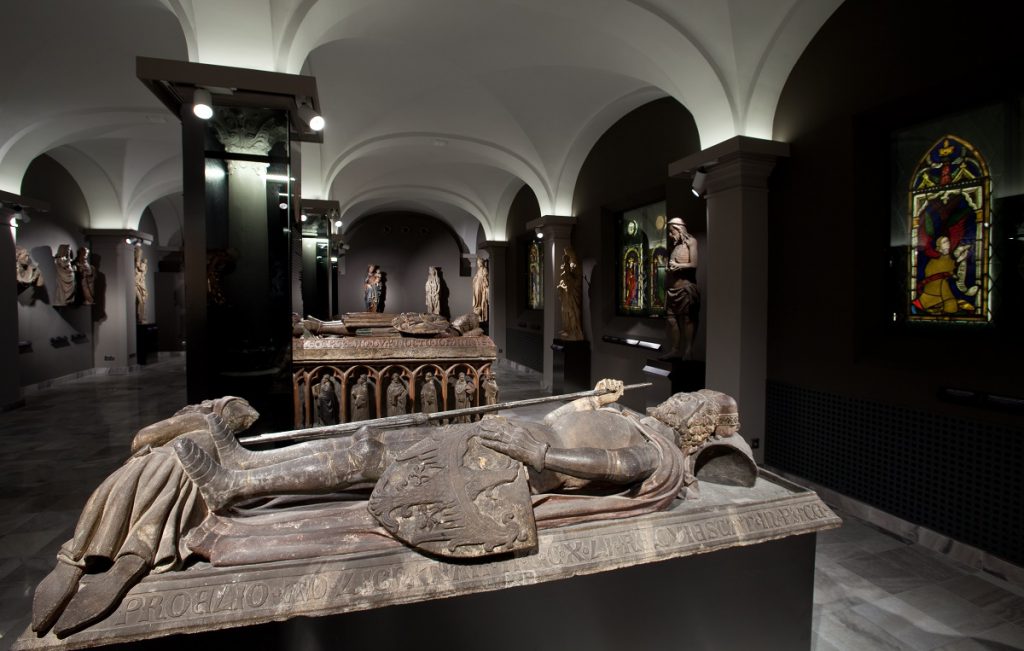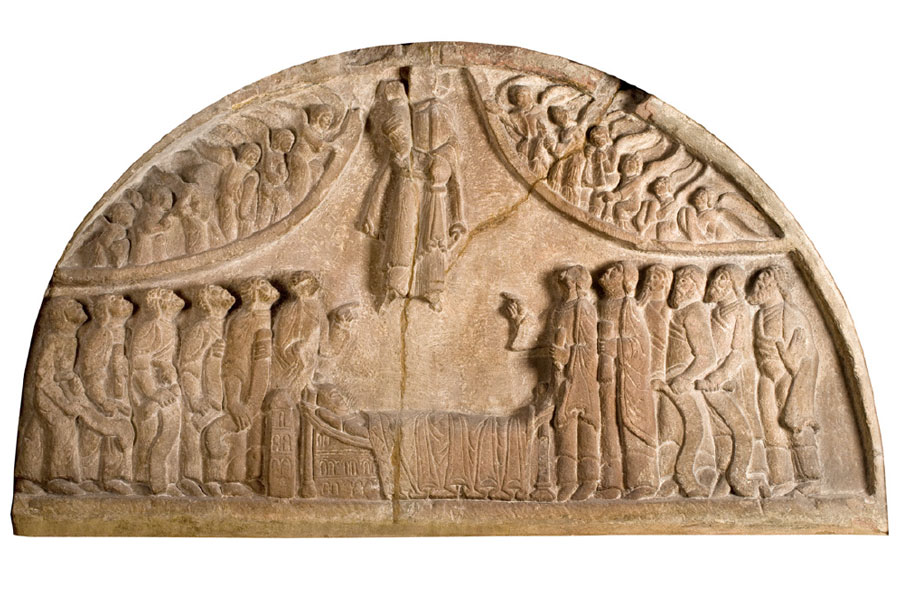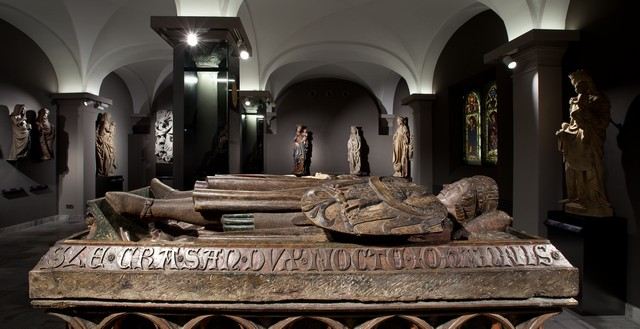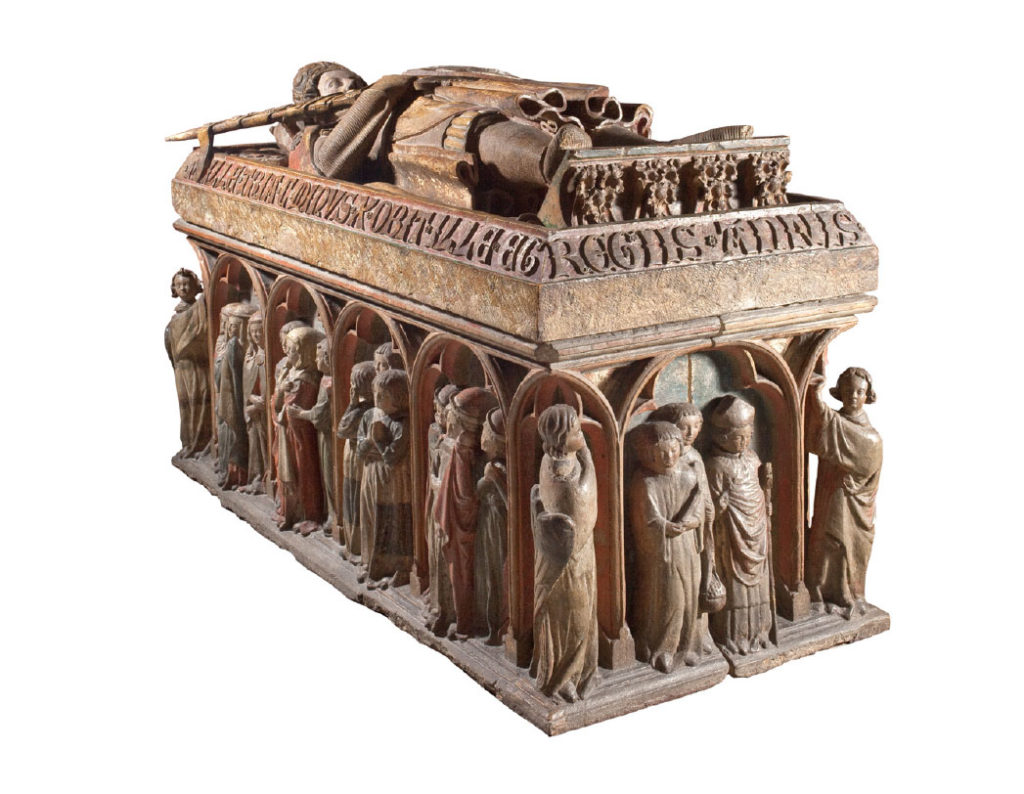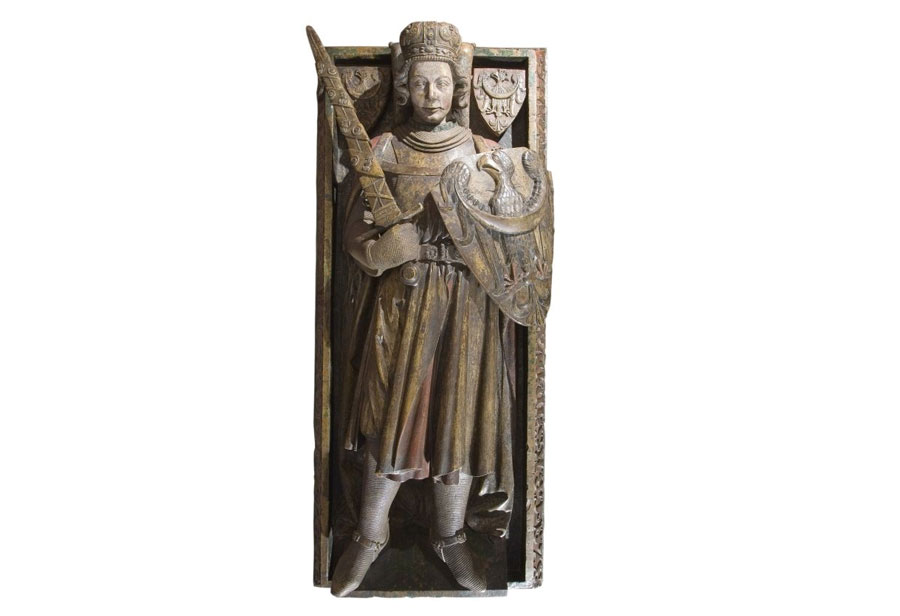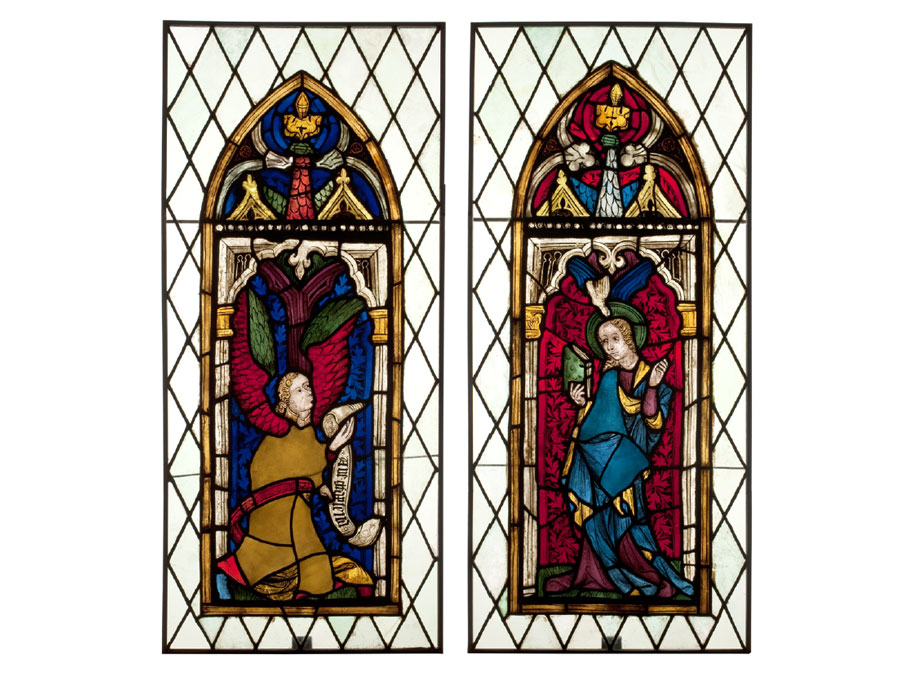The National Museum in Wrocław owns one of the most interesting and valuable collections of Medieval art in Poland and in Central Europe, on display in the permanent exhibitions: “Silesian stone sculpture from 12th–16 century”, “Stained glass in 15th century” and “Silesian art from 14th–16th century” (both on the 1st floor).
The first one shows a dozen or so stone sculptures and some remaining fragments, traditionally called a lapidarium (Latin lapis, lapidis ‘stone’).
The display showcases examples of Romanesque and Gothic architectural and sepulchral sculpture. Visitors can admire a 12th-century tympanum from Ołbin which was once part of the portal in the then church of the Virgin Mary and St Vincent. The church and the buildings housing the Benedictine Abbey in Ołbin were demolished in 1529. The semi-circular slab of sandstone, worked in Lombardy, is adorned on both sides with reliefs depicting the scenes of the Deposition from The Cross, the penitent thief being taken up to Heaven, and the Harrowing of Hell on the one side, the Dormition and the Assumption of Mary into Heaven on the reverse . This side of the tympanum is decidedly better preserved because for a few hundred years it remained on the inside of the church. Both bas-reliefs are characterised by a calm symmetrical composition and demonstrate typical features of Romanesque sculpture: linear modelling and schematic presentation of the figures, combined with a certain compactness and severity.
The tombstones of Silesian dukes from the Piast dynasty form another extremely valuable group of artefacts exhibited in the lapidarium. The interior of the gallery has been deliberately styled to resemble church vaults. The most valuable among them is the centrally positioned tombstone of Duke Henryk IV Probus (d. 1290), made between 1300 and 1320, and the only sarcophagus preserved in its entirety. It consists of two main parts: a double tomb (the lower part) and a massive tombstone with an almost three-dimensional image of the deceased resting on the top of it. Henryk IV Probus was immortalised in knight’s attire and a ducal mitre on his head.
The realistically shown figure confirms the great skill of the unknown sculptor and his assistants. The walls of the tomb are decorated with sculpted figures of mourners taking part in the symbolic burial of the ruler, among them a bishop, monks, members of the family and courtiers. Initially the sarcophagus of Probus was deposited in the choir of the Church of the Holy Cross on the island of Ostrów Tumski in Wrocław, which had been funded by the Duke himself. It was made around 1300–1320 and remains one of the most beautiful Gothic tombstones of the Dukes in this part of Europe. In 1946 the sarcophagus was found in the village of Wierzbna near Świdnica, where it had been moved to avoid its destruction during the Second World War. After the war it became part of the collection in the National Museum in Wrocław.
An impressive Pieta, a statue originating from the Holy Virgin Church on Piasek represents an example of stone sculpture in the so-called beautiful style also known as International Gothic. The sculpture was made around 1400, probably in a stonemason’s workshop in Wrocław, and features a seated figure of Mary with the dead body of Christ resting on her knees. The scene is striking because of the delicate, melancholy and almost lyrical way it depicts the suffering of Mary who wipes away the tears rolling down her cheek with the edge of her veil. Her face, despite the obvious signs of pain, still strikes the viewer with its beauty and delicacy of youthful features.
Other artefacts displayed in the lapidarium include six 15th-century stained glass panels, whose origins still remain unknown. They arrived in the collection of the National Museum in Wrocław in the 1960s, transferred from the Office of the Regional Conservation Officer. Prior to that they were displayed in Grodziec Castle which in the early 20th century could boast a large collection of historical stained glass.
Two stained glass panels are placed to the right, opposite the entrance to the lapidarium, and both of them depict the scene of the Annunciation. The left one shows Archangel Gabriel, the other (to the right) the Virgin Mary with a descending dove which symbolizes the Holy Ghost. Both pieces, made in c.1430 in the region of Carinthia in Austria in the style of International Gothic. They are characterized by their intensive colouring, dominated by hues of dark purple, red and light blue.
